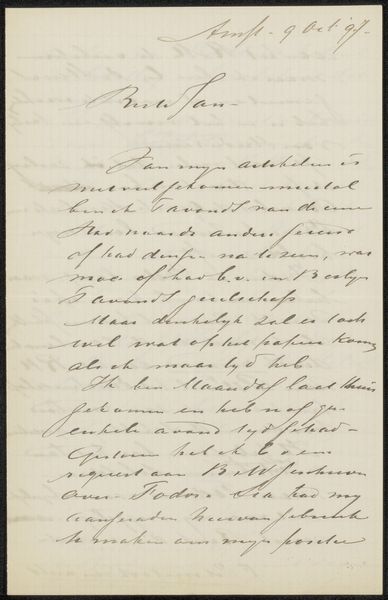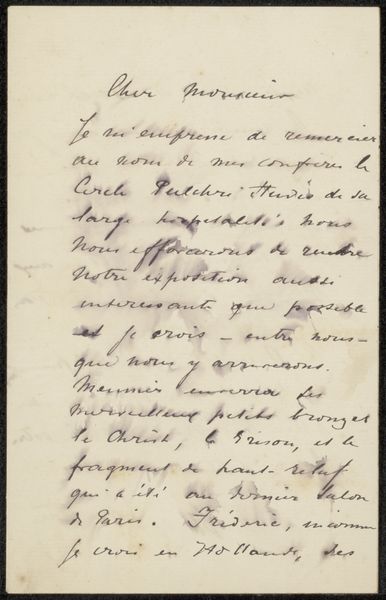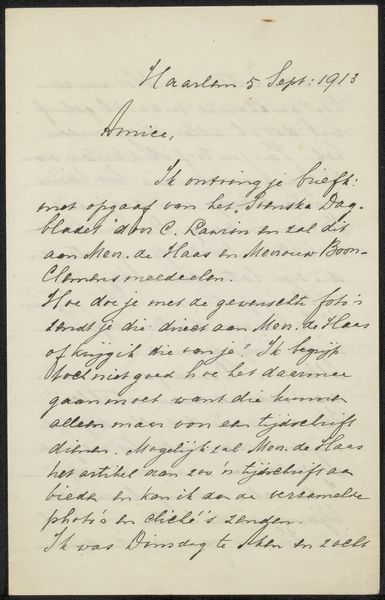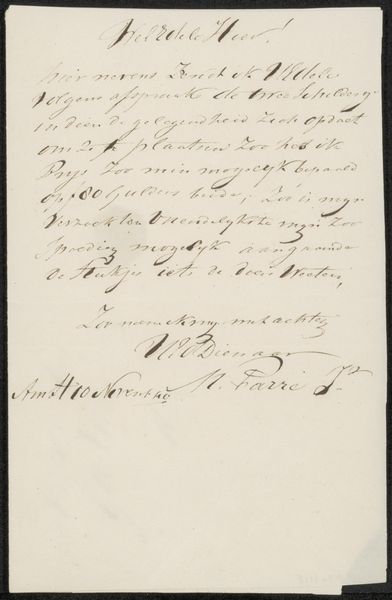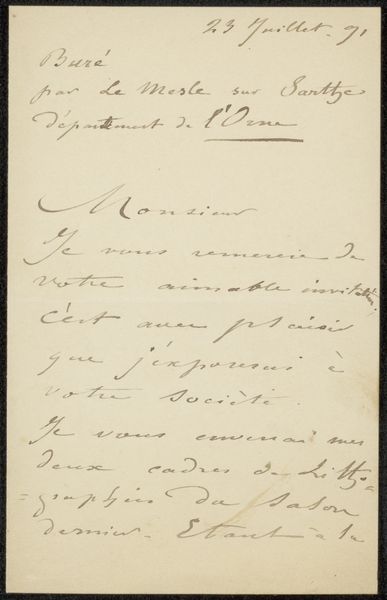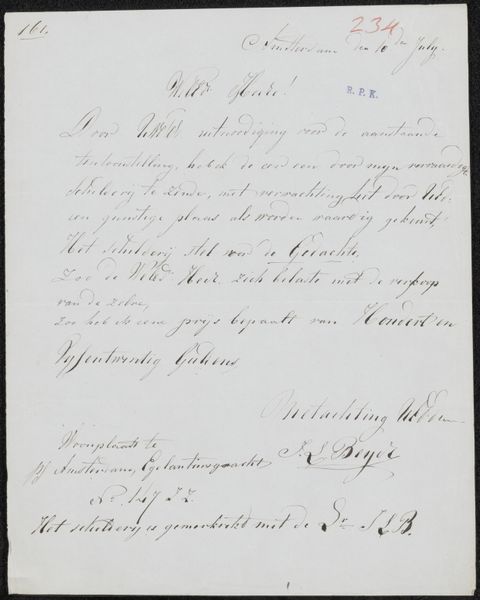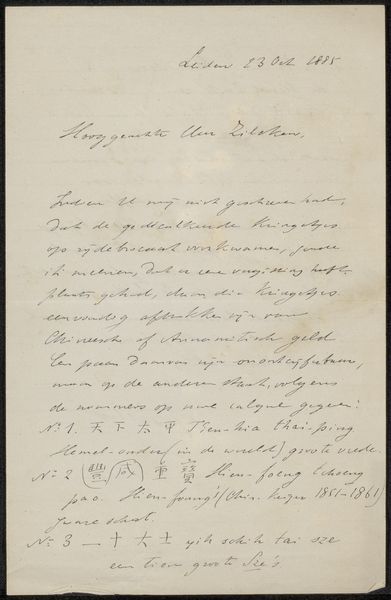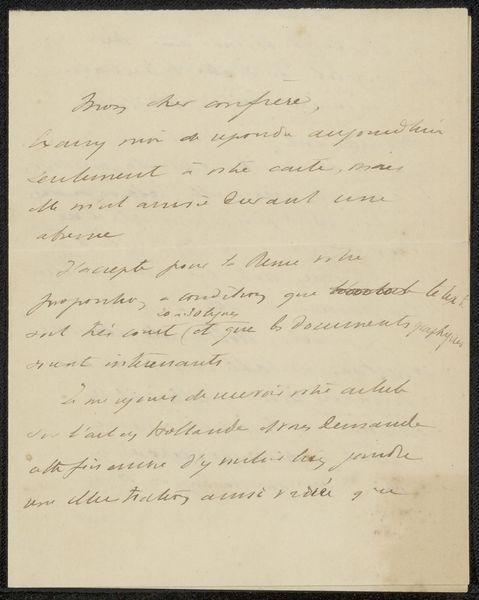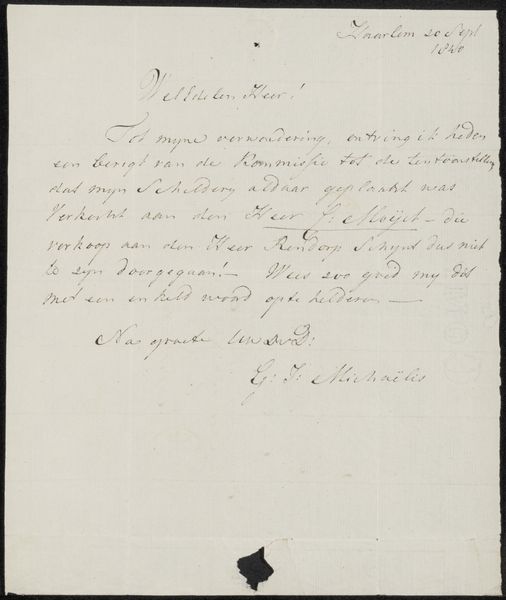
drawing, paper, ink
#
drawing
#
paper
#
ink
#
calligraphy
Copyright: Rijks Museum: Open Domain
Curator: Here we have "Brief aan Philip Zilcken," a drawing believed to be from around 1897-1899 by Émile Guimet. It appears to be a letter, rendered in ink on paper. Editor: Immediately, the density of the handwritten text, combined with the faded ink, creates an atmosphere of intimacy, like uncovering a hidden correspondence. Curator: Yes, Guimet, known for his travels and establishment of the Musée Guimet dedicated to Asian arts, penned this note to Philip Zilcken, a Dutch artist and critic. Considering Guimet's fascination with Eastern cultures, perhaps the letter addresses artistic interpretations or collections from his travels? Editor: Or even logistics, given the letterhead indicating its origin from Fleurieu-sur-Saône. It raises questions about the very production of this message. What type of paper was commonly used at that time, and where did Guimet obtain his ink? The means of material exchange matter, informing not just the visual outcome, but the social milieu in which this art functioned. Curator: Absolutely, the letter is more than just a message. Its existence within the institutional framework of art history and the postal service, connecting figures like Guimet and Zilcken, highlights how the networks shape cultural dialogue. Think about the galleries and salons these men frequented and how this message might influence reception and opinion. Editor: Exactly. Looking at the calligraphy, you notice it shifts, almost becoming art for art's sake, departing from merely legible prose toward abstraction. Did the specific tools and materiality involved shape that stylistic quality, blurring function and the very definition of artistic labour? Curator: Fascinating perspectives. Considering this interaction between patron and artist adds so much nuance to our appreciation of the networks that sustained the art world at the time. Editor: Yes, tracing the physical journey and manufacture opens fresh inquiry paths within the narratives this piece holds.
Comments
No comments
Be the first to comment and join the conversation on the ultimate creative platform.
